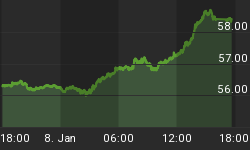Accused of failing to observe good cybersecurity hygiene, multinational telecommunication equipment manufacturer, Huawei, has become the biggest collateral damage in fisticuffs between the world’s two leading economies. Last week, the U.S. Commerce Dept. said it had added Huawei to the dreaded Entity List, which was quickly followed by an executive order by President Trump that banned the company from doing business with U.S. companies on security grounds.
Left with little choice, U.S. tech companies rapidly distanced themselves from the telecom pariah with semiconductor players Intel, Qualcomm, Micron, Xilinx, Broadcom, Qorvo and Western Digital cutting of their chip supplies. German chip maker, Infineon, also said it was temporarily halting shipments to assess compliance requirements.
As if that was not already bad enough, Google on Sunday dealt Huawei a potentially lethal blow after withdrawing its Android license with terse one-liner saying it all:
"We are complying with the order and reviewing the implications."
Android is by far the most popular mobile operating system, powering nearly 4-out-of-5 smartphones globally. The withdrawal would effectively have cut off Huawei from critical chip supplies as well as a host of essential Google apps and services that consumers expect on their Android devices—if the government had not immediately changed its mind.
Huawei though can still count itself lucky after Commerce Dept. granted its chip and component suppliers a 90-day reprieve during which time they will be able to do business with the company through Aug. 20.

(Click to enlarge)
Source: StatCounter
What the restrictions could mean for Huawei
Huawei is no stranger to controversy, with U.S. and EU watchdogs in the past accusing it of cyber-espionage and using illegal backdoors on its telecom gear to spy on target companies. Last year, the U.S. charged Meng Wanzhou, Huawei CFO and daughter of Huawei founder and president Ren Zhengfei, with stealing U.S. trade secrets.
Yet, the latest ban could prove to be by far the most extensive and damaging from Huawei’s standpoint—if nothing is worked out over the next three months.
But just how bad is the potential damage? For starters, existing Huawei smartphones are unlikely to be affected—at least temporarily—with popular services such as Google Play and its security protections continuing to function as normal.
Related: Trump Lifts Metals Tariffs To Cool Simmering Trade War
Second, Huawei says the temporary export restrictions are meaningless [ to it] since it has been stockpiling chips in anticipation of a crackdown. Unlike ZTE, which went into meltdown when it faced a similar ban by the U.S. last year, Huawei has some internal manufacturing capacity thanks to its HiSilicon fabs.
But that’s about where the tough talk comes to an end. The company remains heavily reliant on U.S. software and hardware. Going forward, the world’s second largest smartphone manufacturer will be restricted to only using Android Open Source Project (AOSP) in future smartphones. This leaves buyers of the company’s smartphones in a precarious position because the company will only be able to push security updates for the open-source system only when they become available—meaning ceding control of a key component to third-parties.
Of course, Huawei could simply develop its own mobile OS.
In fact, the company claimed as much as way back as 2012. But judging by how the technological graveyard is littered with OSes that once looked promising—Windows 10 Mobile, Firefox OS, BlackBerry 10, Ubuntu Touch and webOS among others—there’s no guarantee that Huawei’s would fare any better. Further, even rather successful operating systems like Samsung’s Tizen and Sailfish OS, developed by an ex-Nokia employee, have not escaped the Android-clone label due to having optional Android runtimes though with poorer compatibility for apps that require Google APIs.
Huawei could also simply decide to only develop smartphones for its internal market where these restrictions do not apply. But for a company making half its 200 million smartphones annual sales in external markets at some of the highest ASPs in the Android world--that’s gravy train it’s not about to hop out of without a fight.

(Click to enlarge)
Source: XDA Developers
Huawei’s fledgling PC OEM business is likely to fare better since its CPU-manufacturing segment, HiSilicon, does not rely on Intel’s x86-64 product lines. If push comes to shove, Huawei could resort to China-targeted distributions such as Ubuntu Kylin or even ARM64 builds of that distribution.
However, expecting a dominant smartphone seller to suddenly embrace open-source requires a stretch of the imagination.
The damage is done
Ultimately, over time, even in the event that the impasse remains unresolved and Google and Huawei chip suppliers go ahead with the restrictions, Huawei might still be able to able to obviate some of the worst effects of the ban given that IC design and wafer shipment tends to be highly interconnected throughout the world.
But make no mistake about: both sides would end up with a bloody nose. Last year, U.S. technology exports to China totaled $17.9 billion.
According to a Monday report by non-partisan think tank, the Information Technology and Innovation Foundation (ITIF), total export controls under consideration by the U.S. could mean U.S. firms losing $14.1 billion to $56.3 billion and anywhere from 18,000 to 74,000 jobs.
By Alex Kimani for SafeHaven.com
More Top Reads From Safehaven.com

















